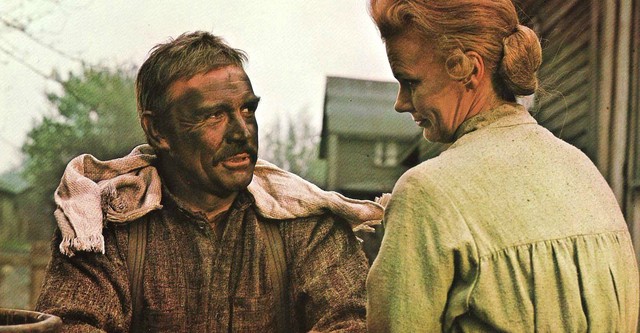
When I was in middle school and the curriculum turned towards our local Rust Belt history then it would be likely that the teacher would show The Molly Maguires (1970). The slow burning tension of the film with its subtle relationships between characters certainly made The Molly Maguires an odd choice of film to screen for sixth graders. Of course the teacher would go on about the historical accuracy of the film rather than its aesthetic merits but that didn’t mean that The Molly Maguires didn’t affect a few kids.
Admittedly I had already seen Martin Ritt’s film The Molly Maguires two years earlier when I rented it on VHS from the public library. When you’re that young you aren’t as perceptive with regards to how Ritt’s direction, James Wong Howe’s cinematography and Henry Mancini’s music all play with your emotions. At that age the cinema is all about emotional impact and the relationship between Sean Connery’s terrorist miner and Richard Harris’ undercover Pinkerton made a very serious impression.
The Molly Maguires is a very well crafted film with an outstanding opening sequence. But the thing that makes the film is the chemistry between the two leads. In fact, their chemistry on screen was such that director Richard Lester cast the two men in his anti-swashbuckler Robin & Marian (1976) where again they play friends compromised by inevitable betrayals and moral corruption. Really it’s no surprise that the acting in The Molly Maguires is so good since directing actors was Martin Ritt’s greatest strength as a filmmaker.
By the time Ritt was making The Molly Maguires his signature brand of gritty realism with a political conscious was no longer en vogue. As the sixties wore on Ritt’s films seemed to become progressively derivative as a whole. It was as if Martin Ritt was making films without a thought as to how his audience had changed. Compared to the filmmakers popularly characterized today as the New Hollywood, Ritt’s style is distinctively caught in the fifties. Where Ritt’s contemporaries like John Frankenheimer found more freedom to push and develop their own style in the seventies Ritt merely changed the subject matter of his films.
In many ways The Molly Maguires simply re-imagines Martin Ritt’s best film Edge Of The City (1957) as a nineteenth century period piece without any of the commentary on race. What these two films have in common is their examination of labor rights, male friendships, and the corrupting influence of capitalism. Ritt is a skilled enough director that even one of his lesser films is still an engaging watch, if not a memorable one.
